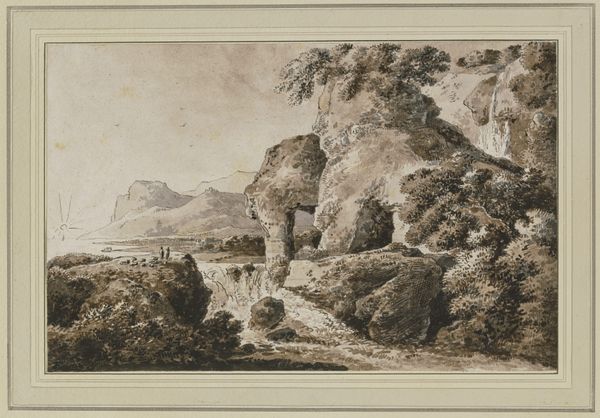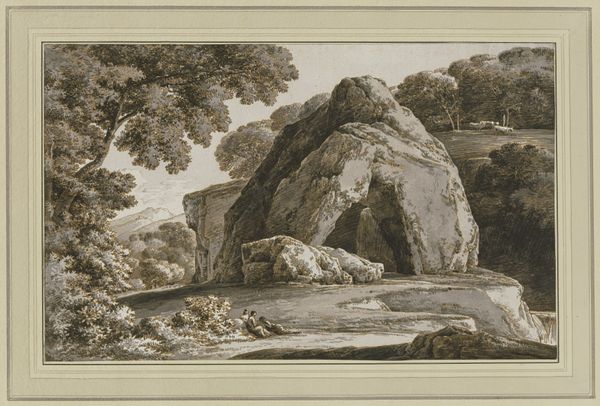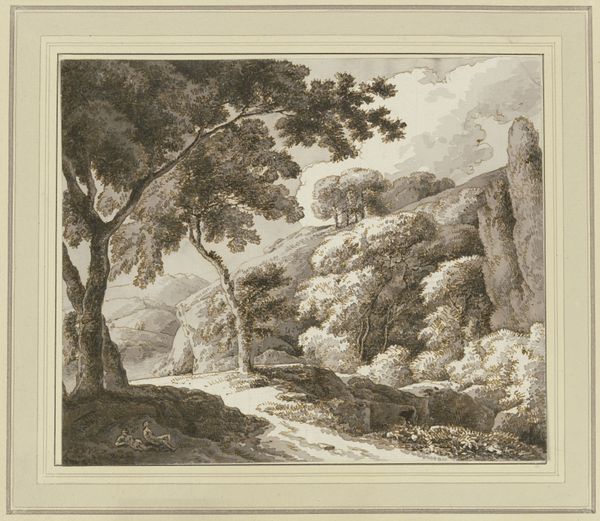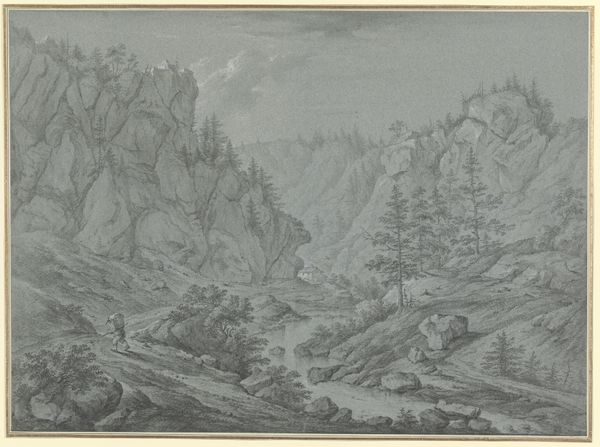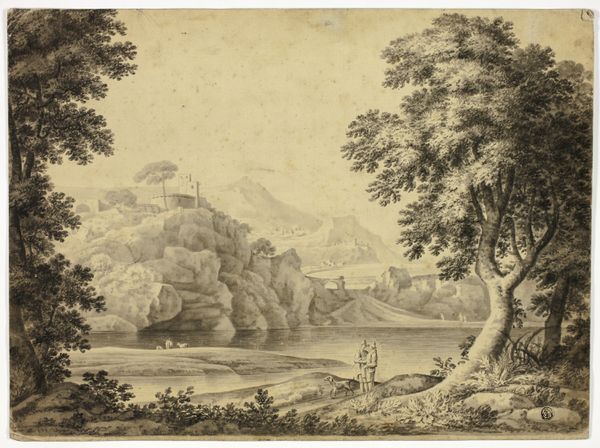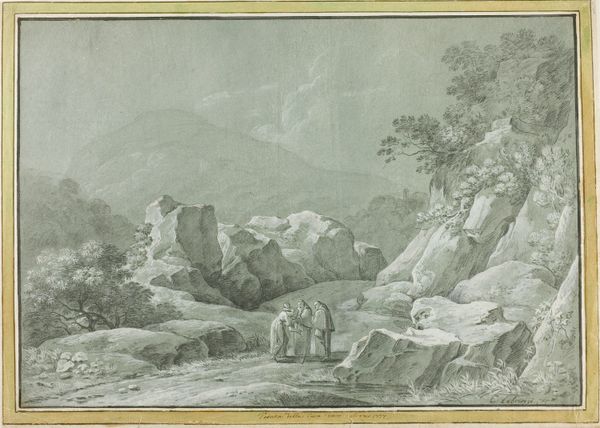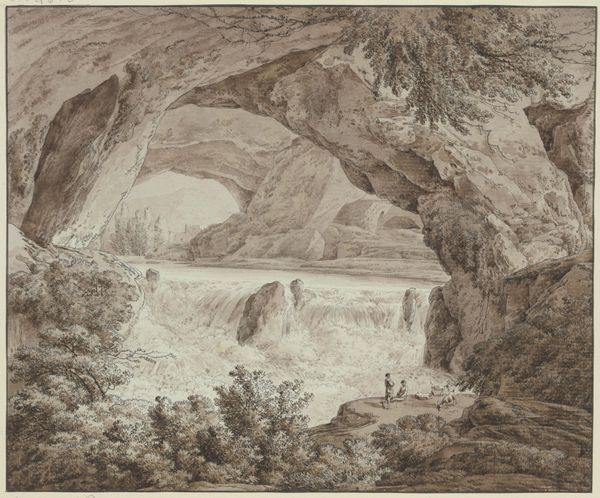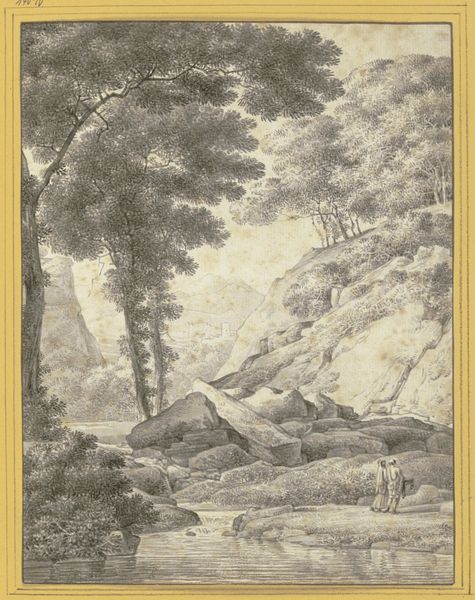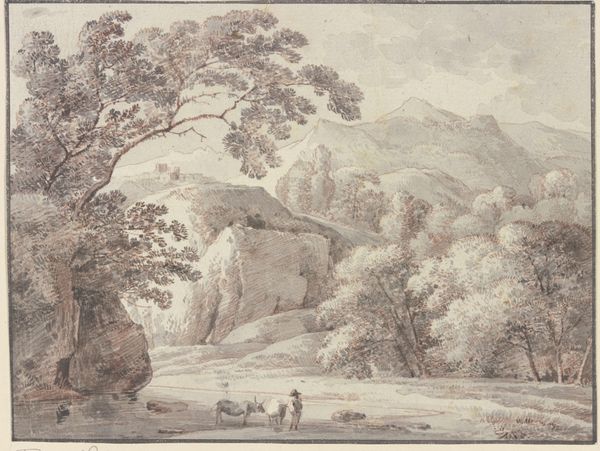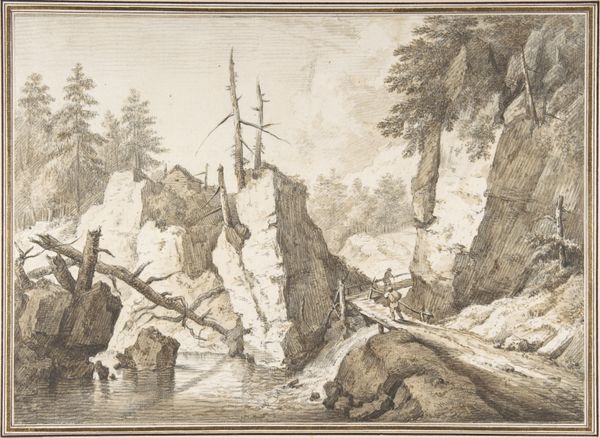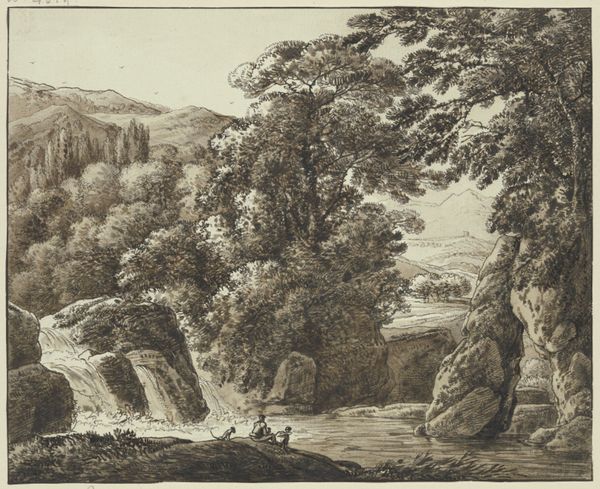
drawing, ink, charcoal
#
drawing
#
landscape
#
charcoal drawing
#
ink
#
german
#
romanticism
#
15_18th-century
#
charcoal
Copyright: Public Domain
Editor: This is "Gewässer umstanden von zerklüfteten Felsen" a landscape drawing, in ink and charcoal, by Franz Kobell. I'm immediately drawn to the imposing rocks and the lone figures; it feels very Romantic and evokes a sense of humanity against the vastness of nature. How do you interpret this work? Curator: Well, what resonates with me is the symbolic interplay between the tamed landscape and the wilder elements. The figures with their herd almost disappear within the larger composition of the rocks and mountain. Kobell seems interested in humanity's small but persistent footprint on nature's grandeur. The jagged rocks speak to a different kind of symbolic presence as a vestige of time. What does that imagery convey to you? Editor: I see it as a sort of contrast. The rocks evoke timelessness, and even danger, compared to the figures that look so ephemeral, so small and transient in this scene. Curator: Precisely. And this visual vocabulary can deepen our understanding of 18th-century sensibilities. Think about the cultural context: What was society’s understanding of our relation to the earth at that time? What did they want to communicate about the natural world? Editor: I never considered that, how time is communicated through the rendering of the rock formations themselves. It certainly paints a complex picture, making me rethink the role of landscape art. Curator: Absolutely. By understanding the artist’s choices of symbols and imagery, we access a much richer historical and emotional understanding. Editor: I learned to look closely and ask questions beyond face value, and question more of my first assumptions. Curator: It is often about digging deeper, looking into that emotional symbolism that transcends time.
Comments
No comments
Be the first to comment and join the conversation on the ultimate creative platform.
